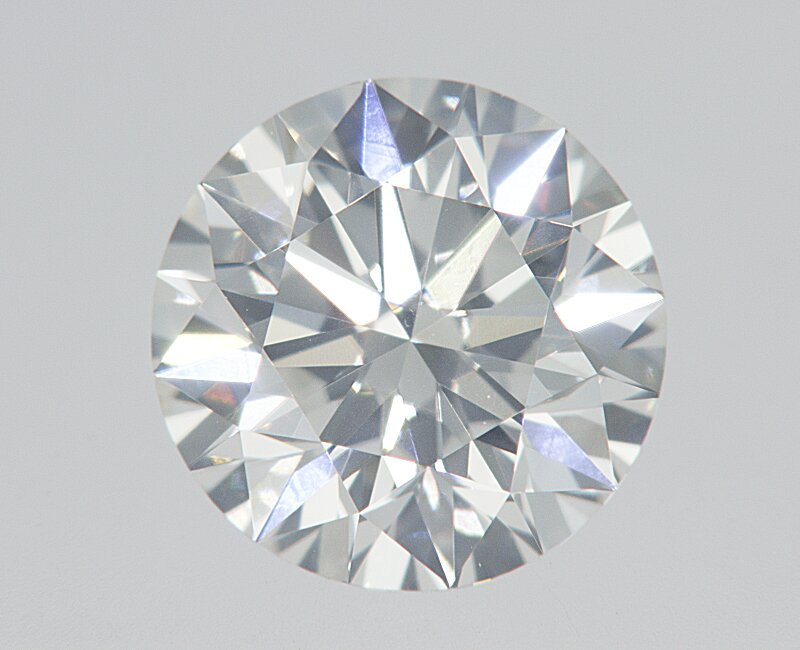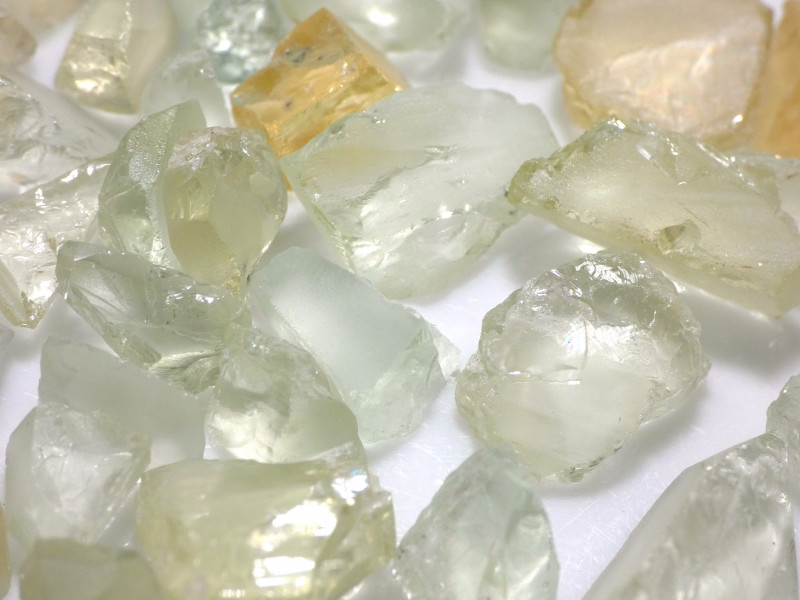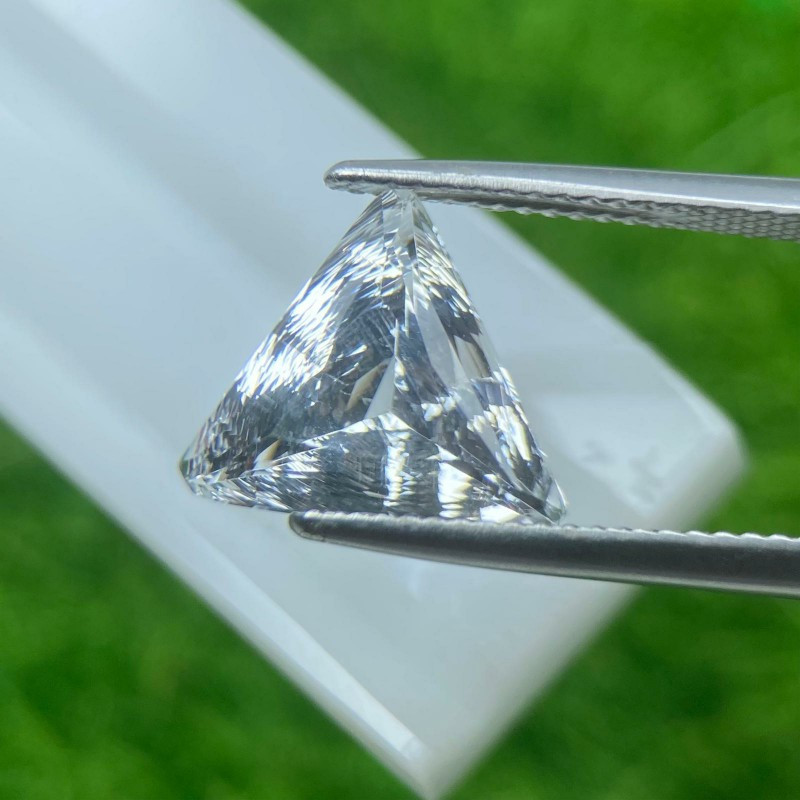
Goshenite Gemstone: Properties, Meanings, Value & More
 Commonly referred to as “white beryl,” goshenite is a colorless, lesser-known variety of the mineral beryl. This elegant gem is considered the purest variety because of its excellent transparency.
Commonly referred to as “white beryl,” goshenite is a colorless, lesser-known variety of the mineral beryl. This elegant gem is considered the purest variety because of its excellent transparency.
As a beryl, does that mean goshenite is aquamarine? Not exactly. Though the beryl family includes aquamarine, emerald, and morganite, they’re each unique in their own ways (more on that later!).
The goshenite stone meaning is closely tied to motherhood and femininity. In fact, many consider this gemstone the “Mother of Crystals.”
What does goshenite do spiritually? How does it form? Where can I get my own?
For the answers to these questions and more, follow along as we cover all there is to know about glimmering goshenite gemstones!

About Goshenite Stone
Why is goshenite considered the mother of all gemstones? With no impurities present in this semi-precious gemstone, goshenite technically has the power to transform into other beryls like emerald, morganite, or bixbite.
In addition to motherhood, goshenite’s spiritual meanings are associated with the moon and angels. Goshenite isn’t a traditional zodiac stone, but it’s believed to support Gemini and Taurus signs.
Mineral-wise, how do you identify goshenite?

Goshenite Specifications & Characteristics
Goshenite is a beryllium aluminum silicate with a chemical formula of Be3Al2Si6O18. During formation, it crystallizes in small prismatic shards, vertically striated “icicles”, and hexagonal rods.
Among all the beryls, goshenite is the only variety that’s colorless. However, the gem’s appearance can be changed to green, yellow, blue, pink, and yellow if impurities enter the stone.
Here’s an overview of goshenite’s mineral data:
Mohs hardness: 7.5 to 8
Color: White, colorless
Crystal structure: Hexagonal
Luster: Vitreous
Transparency: Translucent to transparent
Refractive index: 1.57 - 1.59
Density: 2.6 to 2.8
Cleavage: Imperfect, 1-direction on [0001]
Fracture: Conchoidal to uneven
Streak: Colorless
Luminescence: Fluorescent; Bluish-white in SW-UV, Sometimes orange-yellow in SW or LW-UV
Pleochroism: None
A few gems resemble goshenite, making visual identification a little tricky. The easiest way is to test for density and hardness.
Speaking of look-alikes…
 Pictured: Diamond
Pictured: Diamond
Goshenite vs. Diamond
Goshenite isn’t a wedding anniversary stone, but the gem’s dazzling appearance and durability make it an ideal alternative to diamond. In some countries, it’s even the more popular choice for engagements and weddings!
Not only is goshenite less expensive than costly diamonds, but a well-cut and well-maintained goshenite can remain sparkling and diamond-like for many years. An untrained eye would never even notice the difference!
But what is the difference?
Diamonds and goshenite differ in two ways: brilliance and hardness. Upon closer inspection, goshenite falls behind on the brilliance (amount of light reflection) and fire (colorful sparkle) that diamonds are so celebrated for. Diamonds are also harder than goshenite, sitting at 10 on the Mohs hardness scale.
You may know diamonds are older than man, but how long has goshenite been around?

Goshenite History
Even though goshenite isn’t as popular as other beryls, it’s been around for some time!
Goshenite has been used throughout ancient history, but it was officially discovered by American mineralogist Charles Upham Shepard in 1844. He named goshenite after its place of discovery — the small American town of Goshen, Massachusetts.
Around the 13th century, goshenite was used to make the first eyeglasses. Its clarity and transparency was perfect for lenses, telescopes, and magnifying glasses.
Some biblical translations name goshenite as the gemstone used to make the wheels of God’s chariot.
In 2017, a popular Japanese anime mini-series, Land of the Lustrous, centered around 28 “gems” (immortal, humanoid characters made of crystals). One of the characters was Goshenite, who was always patrolling the land and butting heads with his partner, Morganite — his fellow beryl comrade!
History? Check! Next up, metaphysical properties!

Goshenite Healing Properties
All gemstones have unique characteristics that allow them to be used as potent healing stones — balancing the physical, spiritual, and emotional body.
Goshenite has garnered many names because of its transformative energies, like:
“Mother of All Gems”
“Stone of Clarity and Truth”
“Stone of Love”
“Stone of Spiritual Transformation”
Does it live up to its many names? Let’s find out!
Physical Healing
Physically, what is goshenite used for? It's associated with the head, making it a go-to crystal for upper-body ailments. It’s said to remedy eye-related problems, especially short-sightedness. It may also help with migraines, allergies, sinuses, and insomnia.
Feeling tired? Overworked? Goshenite can also reduce exhaustion. Hello, R&R!
Goshenite’s feminine energy is also believed to help relieve menstrual pains, muscle spasms, hormonal imbalances, mood swings, and postpartum depression.
Emotional Healing
Goshenite gemstone benefits your emotional self in profound ways.
Its uplifting energies are said to free you of all worry and tension. Need to approach a crisis with a clear head? Goshenite keeps you cool, calm, and collected so you can handle any situation with ease.
This brilliant gem is also associated with higher thoughts, clarifying your vision and overall purpose in life. It can inspire creativity and encourage you to pursue new opportunities with a loving, compassionate attitude.
Chakra Healing
What does goshenite do spiritually? Some crystals are believed to represent one or more of the seven chakras (energy points) along your body. They’re used as chakra stones to balance your chakral energies.
Goshenite supports your crown chakra, located at the very top of your head. By activating this chakra, goshenite increases your ability to think analytically, and facilitates higher spiritual awareness, originality, and artistic expression.
An open crown chakra enhances inner visions during meditation and aids in lucid dreaming — directing the energy from each revelation of life’s experiences toward the higher aspects of one’s being.

Goshenite Gemstone Properties
Goshenite is graded by the traditional four Cs of gemstone grading: color, cut, clarity, and carat weight.
Color
Goshenite is usually colorless, white, or off-white. It’s typically free of any impurities that would color it.
Unlike other beryls, whose color results from impurities during crystallization, goshenite forms within cavities of granite and other metamorphic rocks, where it crystallizes over time, free from any color-altering impurities.
Cut
Like all beryl, goshenite’s durability allows it to be cut into most popular shapes and styles for mainstream jewelry. It has a waxy to vitreous (or glassy) luster when cut and polished.
Gems are often faceted into brilliant cuts to highlight their light performance and depth. Less often, goshenite is cut en cabochon to emphasize its luster and color.
You can also buy uncut, raw goshenite, but these specimens are more so for gem collectors than for jewelry.
Clarity
Gem-quality goshenites would fall under the Type II clarity grade. In other words, they’re fairly eye-clean, lacking visible inclusions and blemishes. The fewer flaws a goshenite has, the more valuable it is.
Goshenite has indistinct cleavage running parallel to the basal pinacoid (the top and bottom of the crystal). Therefore, lapidaries typically cut the gem to minimize cleavage while ensuring durability and maximum luster.
Some gems can appear cloudy or opaque, making them less expensive, but such goshenites are rarely used in jewelry.
Carat Weight
Like other beryls, goshenite is priced per carat. The bigger the stone, the more carats it will be and the higher its price.
Larger stones (over 30 cts or so) are usually reserved for museums and gem collectors more so than jewelry-makers. These larger specimens don’t attract the high price that they would if they were diamonds or another precious gem.
If there are minimal inclusions, the price is unaffected. On the other hand, the cut must be planned to avoid losing the diamond-like brilliance that goshenite is famous for. Otherwise, it may fetch a lower price.
Treatments
Goshenite is usually untreated because of its abundance and affordability.
However, it’s rarely treated with irradiation (high-energy particles) to color it yellow, blue, green, pink, or other vibrant, intermediate hues.
Some goshenite is color- and dispersion-enhanced with silver plus other colored foil linings.
Now, how does glittering goshenite come to be?

Goshenite Formation & Sources
Most gem-quality goshenite forms in cavities deep below Earth's surface, on the fringes of the granitic magma body in late stages of crystallization. These cavities provide an open, undisturbed space for the crystals’ growth.
The late-stage timing is when beryllium-rich fluids are exiting the magma body. This abundant supply of beryllium is needed to form the beryllium-rich goshenite.
Another occurrence of goshenite happens within metamorphic rocks. Quality specimens are sometimes found in or near fractures mineralized by hydrothermal activity. Small quantities are sometimes found in the mica schists of convergent tectonic plate boundaries.
If rocks containing goshenite are exposed by erosion from environmental factors, goshenite’s hardness and resistance to weathering allows it to prevail in overlying soils and stream sediments. Many gem-quality specimens are found as waterworn pebbles in stream sediments — suggesting that a larger, primary deposit is located just upstream!
On that note, where is goshenite found?
Mining Locations
Although goshenite is named after Goshen, Massachusetts, you can find it all over the world!
The largest, high-quality goshenites with the best clarity mainly hail from Brazil. Other localities include:
Africa
Asia
Canada
China
Colombia
Mexico
North and South America
Northern Europe
Pakistan
Russia
Curious about how valuable goshenite is? Here’s what to expect when shopping for this gem!

Goshenite Stone Price & Value
Goshenite isn’t as mainstream as other beryls, but it is abundant and affordable — making this a great kickstarter for your beryl collection. Given you can find some, that is. As a lesser-known stone, goshenite jewelry is sometimes limited and hard to find.
As far as pricing, the goshenite price per carat for cabochons and faceted gems ranges between $6 to $30, more or less.
Rough goshenite prices vary depending on size and appearance, but tend to be less expensive than fancier, cut gems. You can find minimal-quality specimens ranging between $0.30 and $1.83 per carat.
Jewelry prices also vary. As a colorless stone, goshenite accompanies all metal settings beautifully.
Depending on the metal used, goshenite rings, bracelets, and necklaces can cost anywhere between $20 to $3200. Simple, beaded goshenite bracelets generally fetch between $16 and $40.
Despite its abundance and affordability, top-quality and premium-sized goshenite for sale is likely to fetch higher prices.
Regardless of which type of goshenite or goshenite jewelry you buy, you’ll want it to last a lifetime. Let’s wrap up with learning about proper gemstone care!
Goshenite Care and Maintenance
Even though goshenite is a fairly hard gem, it’s not unbreakable. Some care should be taken to ensure it maintains its quality as long as possible.
Avoid ultrasonic cleaners, heat steamers, and harsh chemicals when cleaning your gems. Instead, follow these steps to clean your goshenite:
Use warm water, mild soap, and a soft cloth or toothbrush.
Rinse your goshenite thoroughly in soapy water.
Gently brush away grime with a cloth or toothbrush.
Pat dry with soft cloth or let it air-dry.
Jewelry should incorporate a protective setting to keep your goshenite from damage or falling out. Avoid wearing your goshenite during impact-prone activities like cleaning, exercising, gardening, and so on.
Always store your goshenite in a soft pouch or fabric-lined box avoiding contact from other gems.

Shine Bright with Goshenite!
As you can see, goshenite is so much more than the underappreciated, colorless variety of beryl!
Its sparkling brilliance and crystal-clear transparency is enough to compete with even the most lux of diamonds! Unless you’re a gem expert (like us), your friends would never know the wiser.
If goshenite’s twinkle doesn’t catch your eye, its potent crystal energy may just draw you in and refresh your perspective in ways you never imagined!
Ready to invite the Mother of Crystals into your life?
Search the Gemstone Encyclopedia
Related Auctions
Related Articles
Originally the Birthstones or gemstones were associated with a zodiac sign or the month of a individuals birth. Find out what your stone is and view the stones we have for sale
8th Feb 2021
There are dozens of quartz and chalcedony gems with various colors and patterns. Learn all about quartz properties and every type of quartz, from amethyst and agate to plasma and phantom quartz!
15th Oct 2020
Hackmanite is a pink to violet sodalite gem known for its unique color-change and luminescence. Learn why hackmanite is special, from its rare qualities to the types of hackmanite jewelry available.
28th Mar 2018
Latest Articles
Catapleiite is a lesser-known mineral and rare gemstone often found as stunning tabular rosettes near other rare stones. Discover the history, prices, benefits, and properties of catapleiite!
28th Apr 2025
Yugawaralite is a rare colorless, white, or pinkish zeolite crystal named for its discovery in Yugawara, Japan. Here we uncover the multifaceted history, properties, prices, and uses of yugawaralite.
24th Mar 2025
Simpsonite is a lesser-known mineral known on the gem market for its durability, yellow-orange color, and rarity. Discover all the properties, uses, prices, and history of simpsonite.
3rd Mar 2025
Article Categories
How To's is where you will find helpful articles from gem Rock Auctions on how to cut gemstones, select gemstones and buy gemstones.
9 Articles





